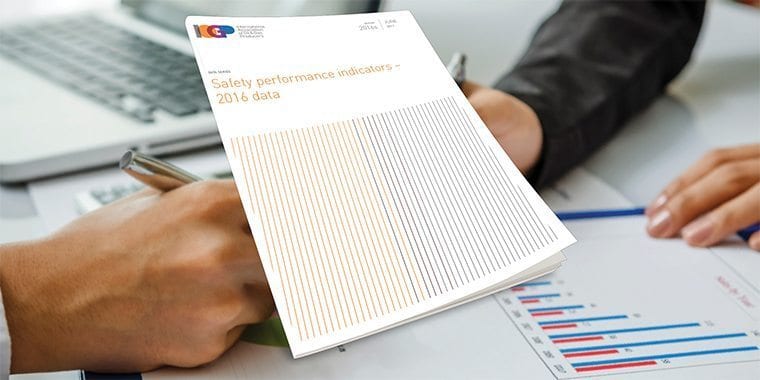
New safety data shows need for Life-Saving Rules
IOGP has been collecting safety incident data from member companies since 1985 – giving the Association the largest database of safety performance in the upstream oil and gas industry. As in previous years, the 2016 report covers worldwide exploration and production – both onshore and offshore – from Member Companies and their contractor employees.
The newly published Safety performance indicators – 2016 data report is based on the analysis of 2.9 million work hours, down 22% from hours reported in 2015. Forty-three companies, operating in 103 countries, submitted data. The report shows that the Fatal Accident Rate (FAR) for reporting companies has increased by 19% compared with data for 2015. The number of deaths decreased from 54 in 2015 to 50 in 2016. The number of fatal incidents also went down, dropping from 40 in 2015 to 29 in 2016.
Improvements were seen in personal injury performance. Lost time injury frequency decreased by 7% and the total recordable injury rate went down by 15% compared with 2015 results. For the past several years, review of the annual data has included analysis of fatal accident descriptions in relation to the IOGP Life-Saving Rules, published in March 2012 as IOGP Report 459. These Rules, now considered industry good practice, are intended to supplement and support existing company management systems programmes and policies. Each Rule – represented in the document by a simple icon and guidance in everyday language – is also linked to controls and barriers which, if used properly, can prevent or avoid fatal incidents.
Analysis of 1,484 fatal incidents reported by IOGP member companies over the last twenty years indicates that adopting, conforming to and enforcing the simple IOGP Rules may well have prevented many of these fatalities.
The safety data for 2016 shows that 58% of the fatal incidents reported were related to the IOGP Life-Saving Rules – a slight improvement to the 70% of fatalities in 2015 that could have been attributed to failures in following Rules.
As IOGP Executive Director Gordon Ballard explains: ‘Some may want to pin these issues on squeezed margins, job uncertainty or doing the same (or more) with less. However, the data do not support that premise, and the hard truth is that commitment to following the Life-Saving Rules should not be affected or rationalized by market conditions. IOGP data show that there are no “new” accidents; only failures to learn or to implement learnings from previous incidents. The Life-Saving Rules have been proven to save lives and the real challenge lies in finding out why these Rules aren’t consistently followed.’
To understand these challenges, IOGP has strengthened its existing Safety Committee, and appointed senior safety leaders from some of the largest oil and gas companies to oversee Committee activities. One of the key aims is to rejuvenate awareness of the Life-Saving Rules to prevent fatal incidents. As was done when the Rules were initially launched by IOGP in 2013, the group is revisiting the Life-Saving Rules, re-investigating, based on our data, which aspects of day-to-day workplace life will have the greatest impact in eliminating fatalities. This critical information will be used to deploy the most effective means to raise awareness of activities that are most likely to result in fatalities − and modify worker and supervisor behaviours accordingly. As with the current Rules, the results of this project will determine simple actions individuals can take to protect themselves and others.
Both Safety performance indicators – 2016 data and Life-Saving Rules are available for free downloading by registering with the IOGP Bookstore.
